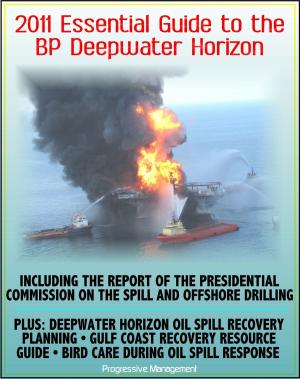Reading the Enemy's Mail: Origins and Development of U.S. Army Tactical Radio Intelligence in World War II, European Theater of Operations - Wartime Operations, Direction Finding Equipment
Nonfiction, History, Military, World War II| Author: | Progressive Management | ISBN: | 9781311000279 |
| Publisher: | Progressive Management | Publication: | April 28, 2015 |
| Imprint: | Smashwords Edition | Language: | English |
| Author: | Progressive Management |
| ISBN: | 9781311000279 |
| Publisher: | Progressive Management |
| Publication: | April 28, 2015 |
| Imprint: | Smashwords Edition |
| Language: | English |
Professionally converted for accurate flowing-text e-book format reproduction, this study traces the development of American radio intelligence at the operational and tactical levels from its beginnings in World War I through the end of World War II. It shows that signals intelligence is useful to the tactical and operational level commander. The study recommends the Army rethink signal intelligence support to the various echelons, primarily through changes to tables of organization and equipment. The thesis covers the initial appearance of radio intelligence units on the battlefields of France in the first world war, identifying specific instances where radio intelligence played a role in a command decision. It also looks at training and doctrine in the period between the two world wars. The thesis also covers the organization, doctrine, and training of radio intelligence units as they prepared for combat. It provides a glimpse into the intelligence support provided to the corps, army, and army group commanders during World War II through examination of actual intercept operations. Where possible the study compares and contrasts German radio intelligence units and operations with their American counterparts.
Chapter 1 - Introduction * Chapter 2 - Organization and Doctrine * Chapter 3 - Wartime Operations * Chapter 4 - Intelligence Operations * Chapter 5 - Analysis and Conclusions . Endnotes * Appendix A - 3250th Signal Service Company Results of Intercept * Appendix B - Tables Of Organization - Signal Radio Intelligence Companies * Appendix C - Direction Finding Equipment * Appendix D - Unit Citation and Campaign Participation * Appendix E - Sequence Of Collection Operations * Appendix F - Radio Intelligence Equipment * Appendix G - Glossary * Bibliography
The purpose of this paper is to examine the . influence of radio intelligence at the army, corps, and army group level in World War II. How was radio intelligence used at the operational and tactical levels during World War II? How did American radio intelligence compare to German units and operations? What lessons did we learn, and what is the effect of those lessons on today's forces? At every echelon, division, corps, and theater army, there are military intelligence (MI) units with the sole purpose of providing signals intelligence support to the commander. One Combat Electronic Warfare and Intelligence (CEWI) battalion directly supports a division; two MI battalions (the Technical Exploitation and the Aerial Exploitation) support a corps; and two MI Battalions (SIGINT) support theater armies worldwide. The roots of these units can be found in the radio intelligence and signal service companies from World War II. No classified material was used in the thesis. While simplifying research, classification problems arose in an unexpected arena. It appears that few operational records (those with actual intercept logs, message contents, etc.) were saved after the war. Two units, after writing their after action reports, destroyed their operational logs because of security reasons, but also to reduce the amount of baggage to take home. This created a gap in tracing how any intercepted material became intelligence briefed to a commander.
Professionally converted for accurate flowing-text e-book format reproduction, this study traces the development of American radio intelligence at the operational and tactical levels from its beginnings in World War I through the end of World War II. It shows that signals intelligence is useful to the tactical and operational level commander. The study recommends the Army rethink signal intelligence support to the various echelons, primarily through changes to tables of organization and equipment. The thesis covers the initial appearance of radio intelligence units on the battlefields of France in the first world war, identifying specific instances where radio intelligence played a role in a command decision. It also looks at training and doctrine in the period between the two world wars. The thesis also covers the organization, doctrine, and training of radio intelligence units as they prepared for combat. It provides a glimpse into the intelligence support provided to the corps, army, and army group commanders during World War II through examination of actual intercept operations. Where possible the study compares and contrasts German radio intelligence units and operations with their American counterparts.
Chapter 1 - Introduction * Chapter 2 - Organization and Doctrine * Chapter 3 - Wartime Operations * Chapter 4 - Intelligence Operations * Chapter 5 - Analysis and Conclusions . Endnotes * Appendix A - 3250th Signal Service Company Results of Intercept * Appendix B - Tables Of Organization - Signal Radio Intelligence Companies * Appendix C - Direction Finding Equipment * Appendix D - Unit Citation and Campaign Participation * Appendix E - Sequence Of Collection Operations * Appendix F - Radio Intelligence Equipment * Appendix G - Glossary * Bibliography
The purpose of this paper is to examine the . influence of radio intelligence at the army, corps, and army group level in World War II. How was radio intelligence used at the operational and tactical levels during World War II? How did American radio intelligence compare to German units and operations? What lessons did we learn, and what is the effect of those lessons on today's forces? At every echelon, division, corps, and theater army, there are military intelligence (MI) units with the sole purpose of providing signals intelligence support to the commander. One Combat Electronic Warfare and Intelligence (CEWI) battalion directly supports a division; two MI battalions (the Technical Exploitation and the Aerial Exploitation) support a corps; and two MI Battalions (SIGINT) support theater armies worldwide. The roots of these units can be found in the radio intelligence and signal service companies from World War II. No classified material was used in the thesis. While simplifying research, classification problems arose in an unexpected arena. It appears that few operational records (those with actual intercept logs, message contents, etc.) were saved after the war. Two units, after writing their after action reports, destroyed their operational logs because of security reasons, but also to reduce the amount of baggage to take home. This created a gap in tracing how any intercepted material became intelligence briefed to a commander.















